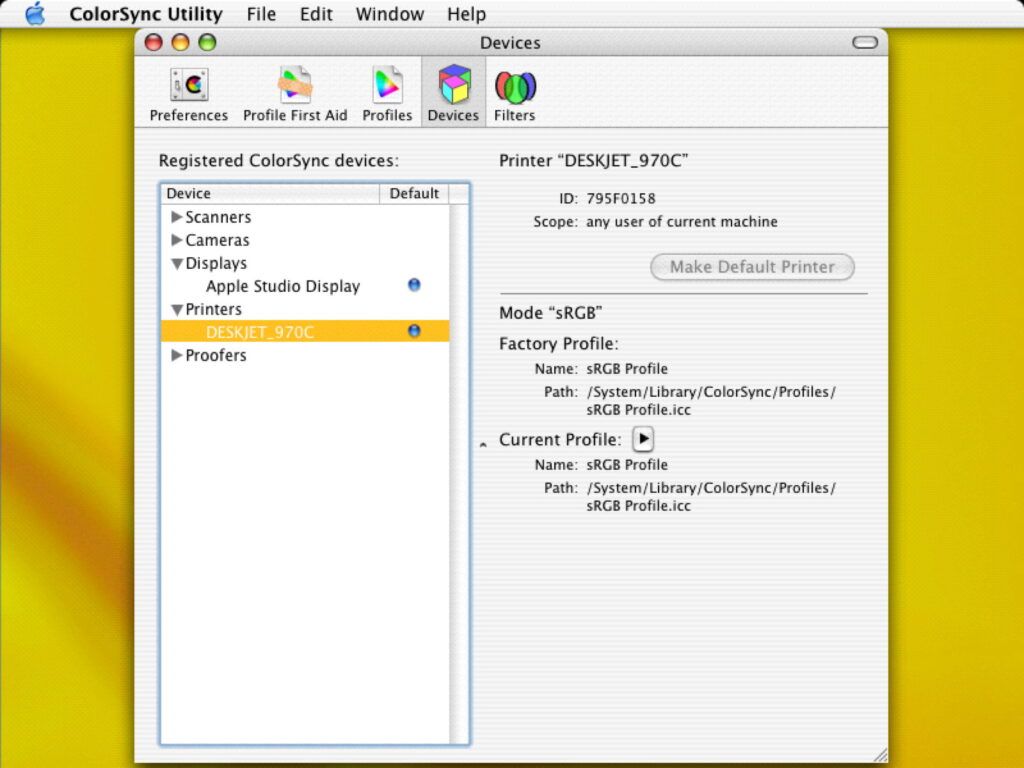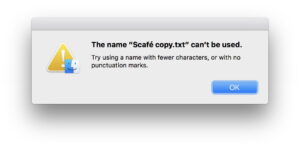A brief history of ColorSync

Each colour output device, such as a printer, has a limited range of colours that it can reproduce, its gamut. To ensure that output best matches expectations, it’s necessary to adjust colours to a device colour profile using a colour management system. When Apple released the Macintosh II in 1987, colour management was in its infancy. With the development of colour output devices like inkjet printers, Xerox, Apple and other manufacturers realised its importance. Apple therefore recruited Robin D. Myers and together with Gary Starkweather they started work on what was to become the first version of ColorSync, released in January 1993.
That year Apple, Adobe, Microsoft, Kodak and others co-founded the International Color Consortium (ICC) to develop ColorSync into an open cross-platform colour management system, and worked on improvements to version 1.0. Although ColorSync was being integrated more with the Mac System, its use remained optional until the release of Mac OS X, and until then plenty of software simply ignored it.
ColorSync 1.2 brought support for Apple’s new PowerPC-based Macs, then in March 1995 ColorSync 2.0 brought major improvements, and was followed by 2.5, probably released with System 7.6.1 in 1997.
ColorSync is seen here in the later days of Classic Mac OS in 2001, managing colour profiles for devices, and providing colour management workflows.
ColorSync 2.0 used a new format for device profiles that had been developed by the ICC for use over a wide range of platforms and devices, although it retained backward compatibility with version 1.0 profiles. In addition to supporting input devices (scanners, cameras), displays, and output devices (printers), these new profiles also supported device links for batch processing, colour space conversions, and abstract devices for subjective transformations. Embedded profiles contained additional information indicating desired quality and rendering intent for colour matching. Printing to a ColorSync-aware printer driver became transparent for apps, allowing them to get the most from the built-in colour management in Mac OS.
With the release of Mac OS X 10.0 Cheetah in 2001, ColorSync came of age and was fully integrated at last, and had won its place in System Prefs. Version 4.0 was soon released in Mac OS X 10.1 Puma that September.
ColorSync Utility provided a rich range of tools for managing device profiles, and repairing any that had become damaged.
The following sequence of screenshots shows the calibration of an Apple Studio Display using Display Calibrator in Mac OS X 10.2 Jaguar in 2003.
ColorSync Utility’s features continued to grow, with the addition of a colour calculator in Mac OS X 10.4 Tiger, and improved visualisation of profiles, seen here in Mac OS X 10.5 Leopard in May 2009.
Colour profiles for printers were often specific not just to the printer, but also to the type of paper used, as with these in Mac OS X 10.7 Lion in 2011.
Since then, the demand for quality colour printing has steadily declined, and by macOS Monterey in 2021, ColorSync Utility was growing neglected, and its Calculator was and remains dysfunctional. The Display Calibrator app is now buried deep in /System/Library/ColorSync/Calibrators. A new colour calibration tool, Pro Display Calibrator, is tucked away in /System/Library/CoreServices to support Apple’s Pro Display XDR, but little has been done to develop the capabilities of the Studio Display since its introduction in 2022.
ColorSync version 4.13.0 carries on managing colour in macOS Sequoia 15, an unsung triumph of science and engineering.
References
Robin D. Myers’ early history
David Hayward Print Hints: Syncing Up With ColorSync 2.0, develop issue 23, September 1995
Apple, ColorSync on Mac OS X, Technical Note TN2035, 8 October 2005
Alas ColorSync Utility!



